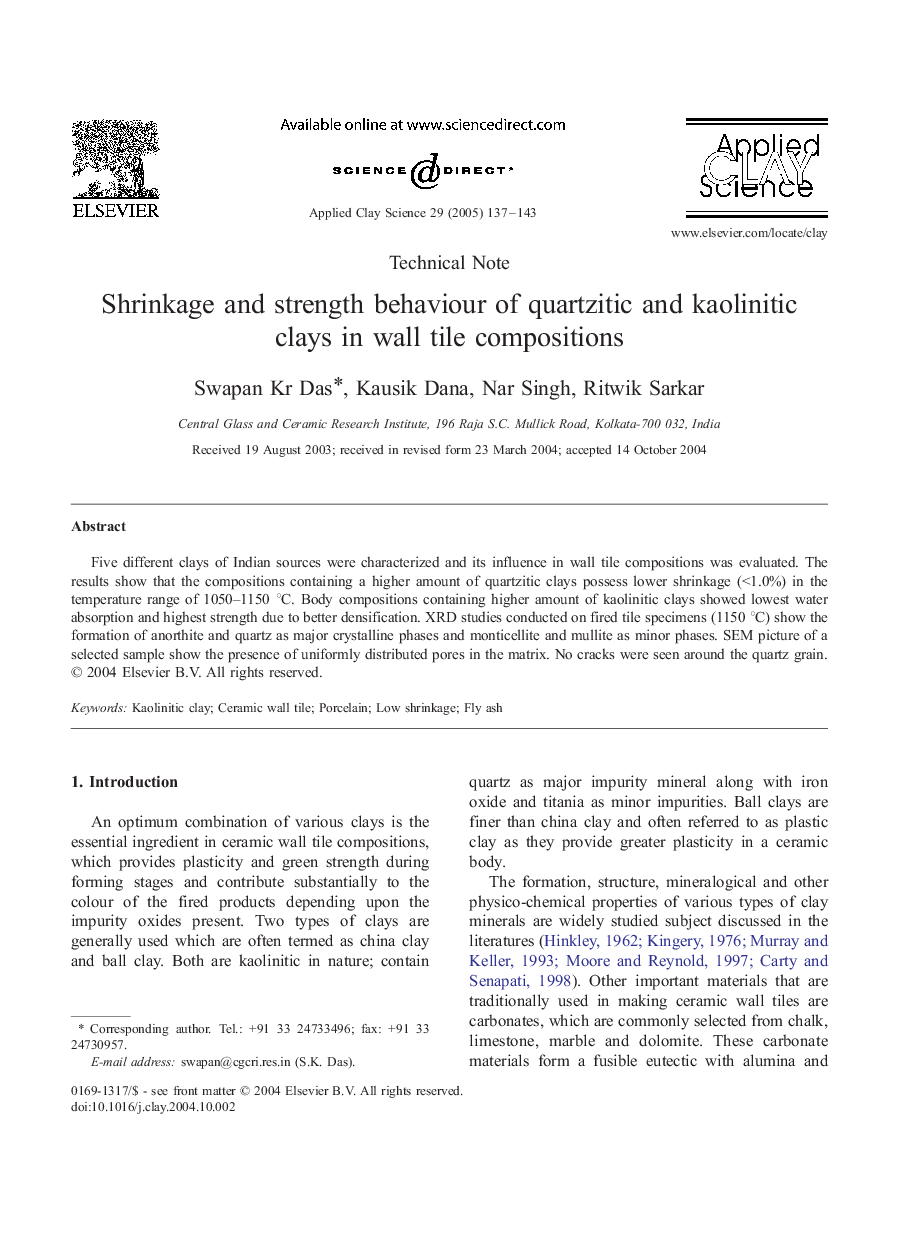| Article ID | Journal | Published Year | Pages | File Type |
|---|---|---|---|---|
| 10676997 | Applied Clay Science | 2005 | 7 Pages |
Abstract
Five different clays of Indian sources were characterized and its influence in wall tile compositions was evaluated. The results show that the compositions containing a higher amount of quartzitic clays possess lower shrinkage (<1.0%) in the temperature range of 1050-1150 °C. Body compositions containing higher amount of kaolinitic clays showed lowest water absorption and highest strength due to better densification. XRD studies conducted on fired tile specimens (1150 °C) show the formation of anorthite and quartz as major crystalline phases and monticellite and mullite as minor phases. SEM picture of a selected sample show the presence of uniformly distributed pores in the matrix. No cracks were seen around the quartz grain.
Related Topics
Physical Sciences and Engineering
Earth and Planetary Sciences
Geochemistry and Petrology
Authors
Swapan Kr Das, Kausik Dana, Nar Singh, Ritwik Sarkar,
